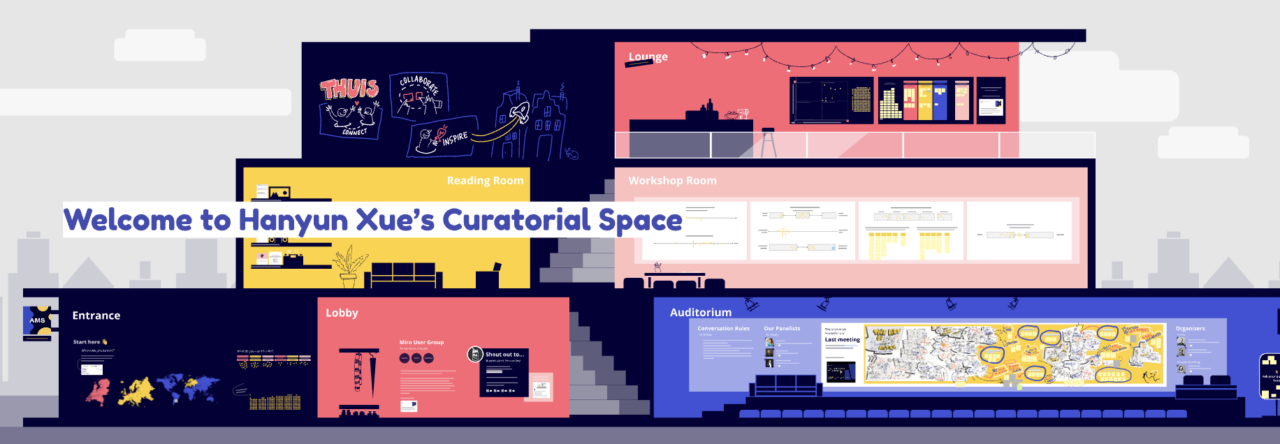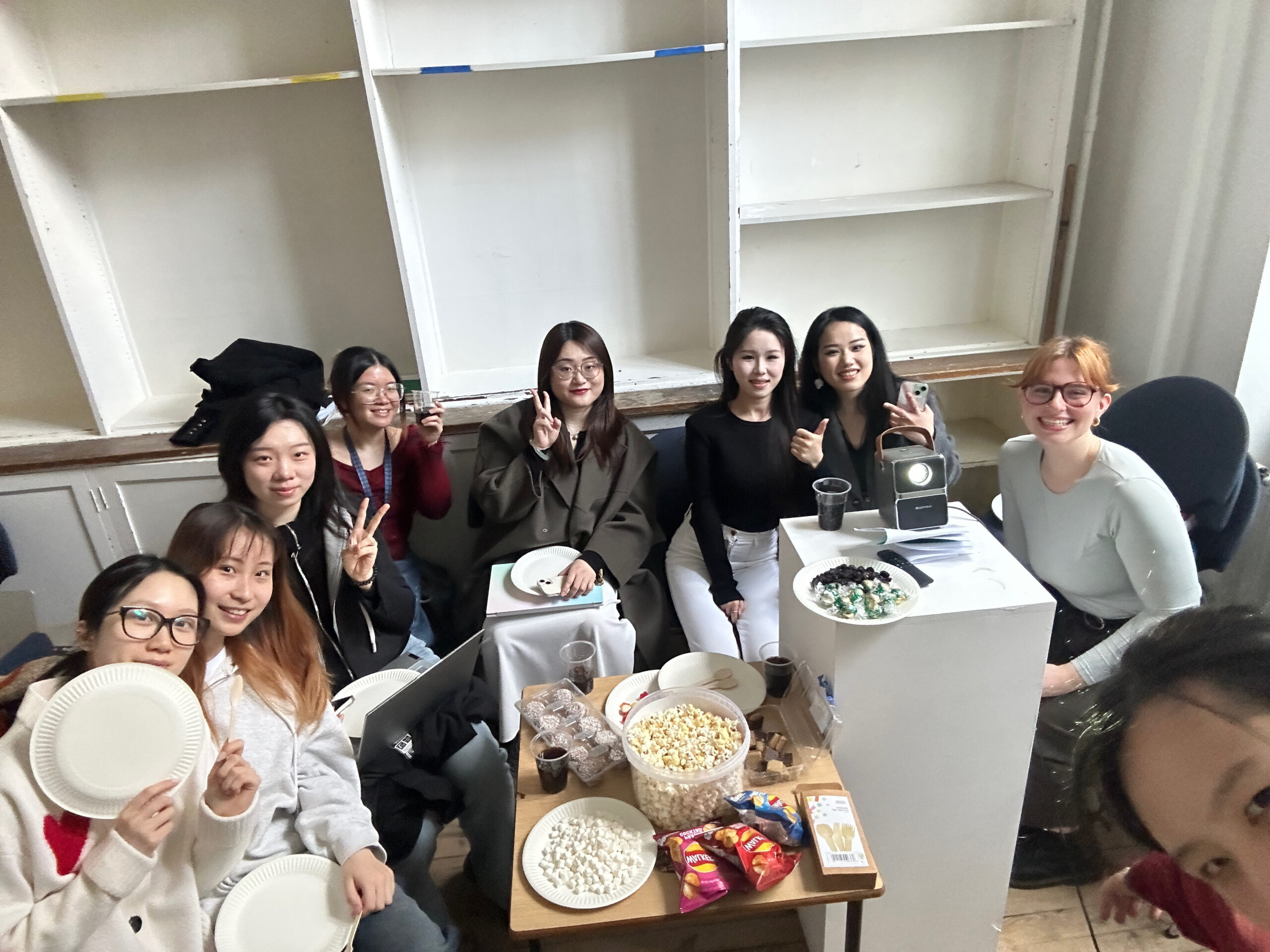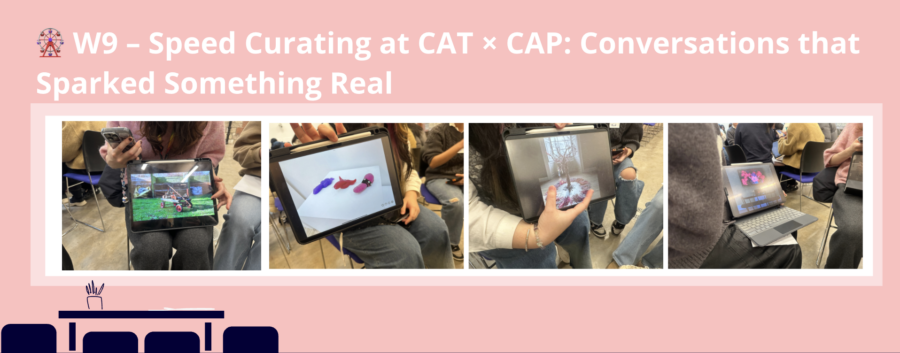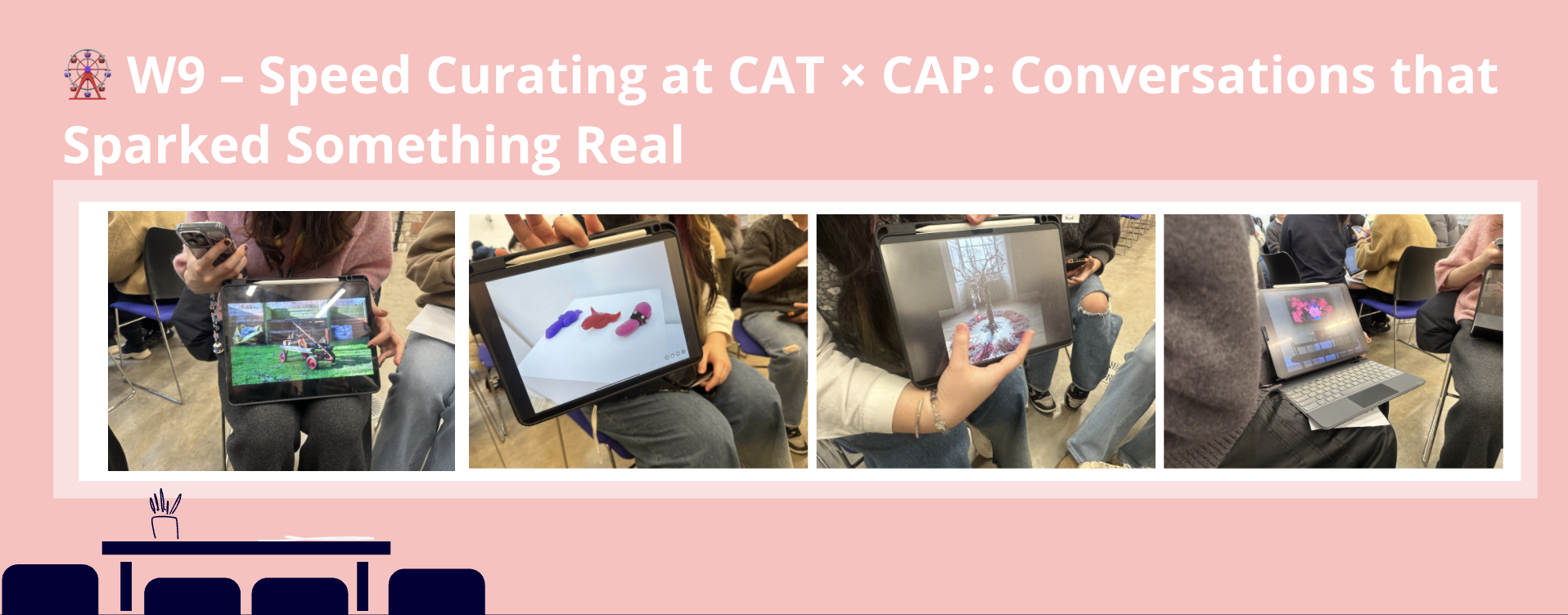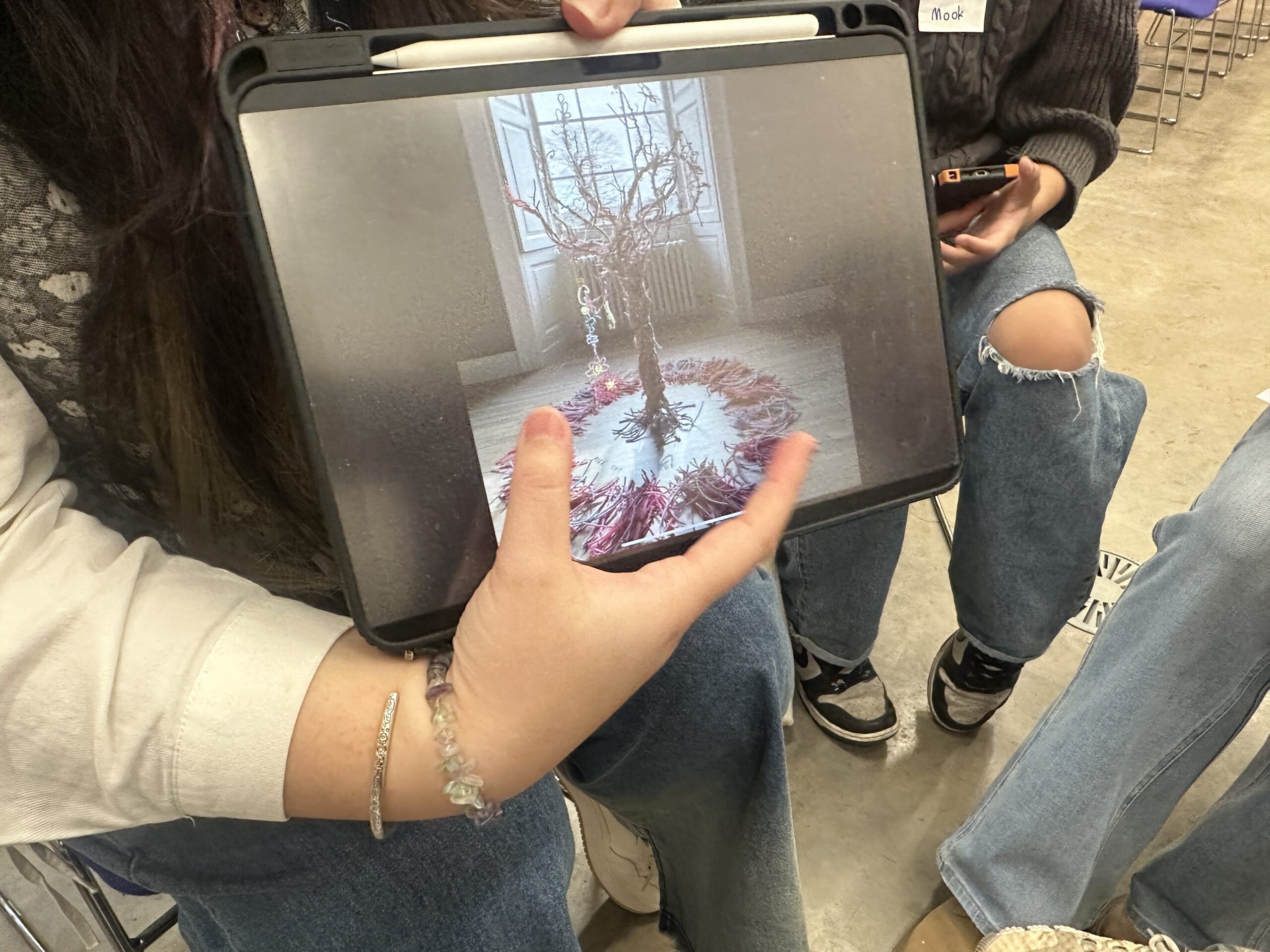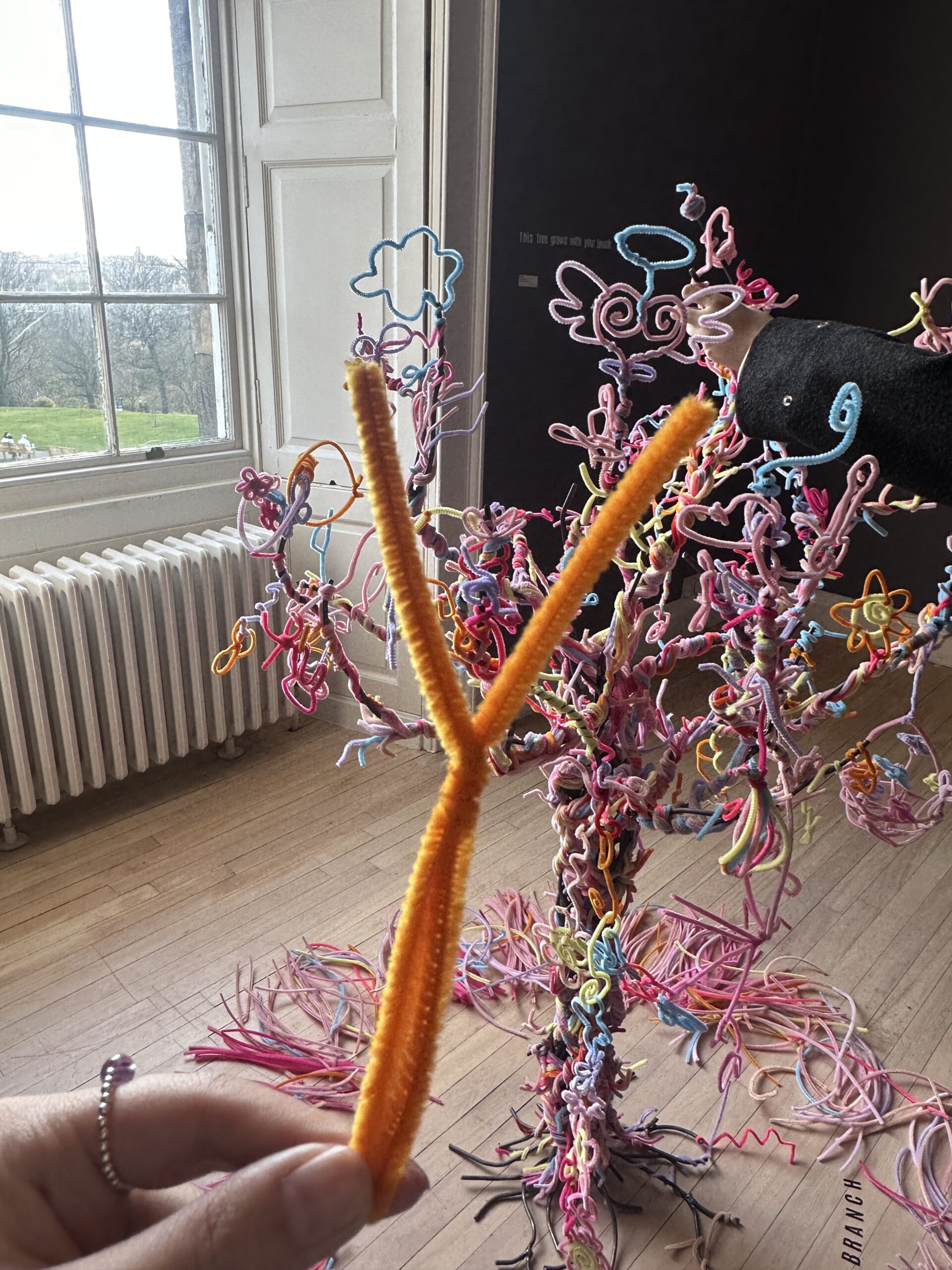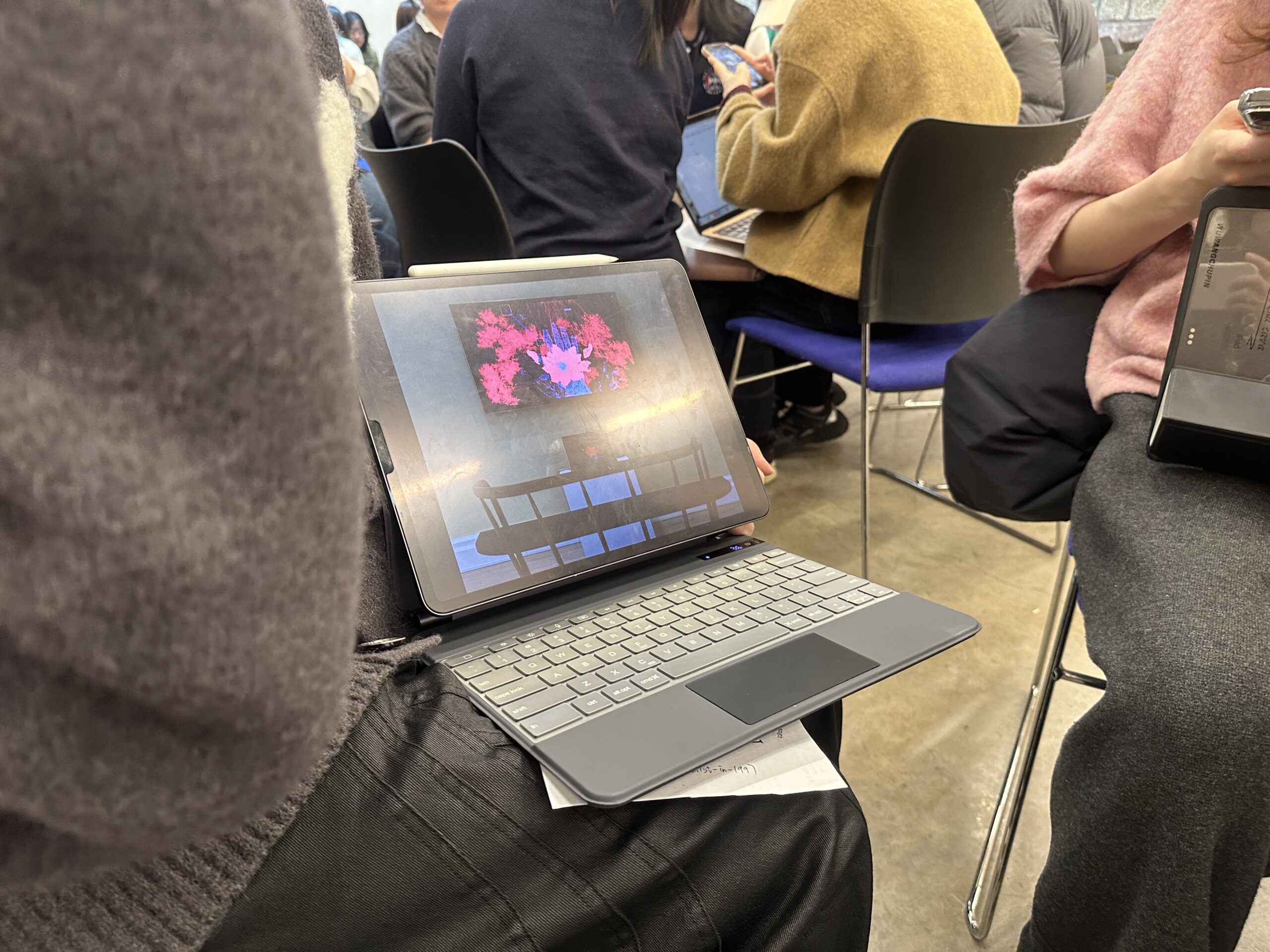If I had to describe these three group events in one word, it would be: alive. Not just because we were surrounded by real flowers and blooming ideas, but because the experience of making something together—as a team—felt truly vibrant.
🎬 Collective Event 1: Film Sharing Afternoon at Summerhall
On March 20, our curatorial collective gathered in the Collective Space at Summerhall for a film-sharing session. We didn’t set out to impress or instruct—our only goal was to feel together. And that’s exactly what happened.
Each of us brought a short experimental video—mostly from UbuWeb, some from YouTube—and we watched them one by one. No lectures, no long analysis. Just a few soft words on why we chose what we chose, and then a moment of stillness to sit with what we saw.
I shared Joan Jonas – Left Side Right Side (1972)
🔗 Link to film
It’s a raw, direct piece that uses the body and the camera to challenge how we see. Jonas’s gestures—moving from left to right, shifting her gaze—felt like she was handing over control of the frame to us. I chose this work because it captures something I want to explore in “Fluid Curating”: what happens when we surrender authority and invite others to take part? What does curatorial space feel like when it becomes shared, intimate, and unstable?
Film Selections
Here are some of the works we watched together:
- Staff at Moderna Museet by Annika Eriksson
- Cycles by Zeinabu irene Davis
- Why Modern Art is so Expensive? by Business Insider
- Singing in the Rain by Gene Kelly & Stanley Donen
- Interior Scroll – The Cave by Carolee Schneemann
- Love Sequences – Qanun by Gobelins
- Inspirator by Abigail Lane
- Lanvin, Alka-Seltzer, Veterano ads by Salvador Dalí
- The Neighbor’s Window by Marshall Curry
Each one offered a different way of sensing—through rhythm, silence, contradiction, or vulnerability. Together, they formed a constellation of emotional and visual textures.
(The poster designed by Sarah)
Collaborative Setup
What I appreciated most was the way we worked as a group. Someone brought popcorn, another taped up the windows to dim the light, someone else set up the projector. We didn’t assign roles like a production team—we just moved together, intuitively, like a collective with shared purpose.
This event reminded me that curating is not just about objects or spaces—it’s about shared energy. In that room, every gesture felt like part of the exhibition already.
Sometimes, curating doesn’t need walls or text panels. Sometimes, it begins with a projector on a wobbly table, a dim room, and a handful of people ready to sit quietly with each other. This was more than a screening. It was a rehearsal for the kind of curating I want to practice: slow, shared, and emotionally intelligent.
💻 Summerhall Event 2 – Entering the World of Artsteps
This session was like stepping into a new dimension. Our teammate Beichen (a.k.a. our unofficial tech guide!) introduced us to Artsteps, an online tool for building virtual exhibitions. At first, it felt a bit like a game—dragging walls, resizing images—but then I realised: this is curation in action.
Together, we explored how to build a digital space that reflects a shared vision. Not just uploading images, but thinking about:
- How does someone move through this exhibition?
- Where should a pause happen?
- Can digital silence feel like breathing space?
I loved seeing how everyone brought something to the table—some coded quietly, some discussed lighting effects, others helped title walls or test the walkthroughs. It wasn’t just about digital skills. It was about shared authorship.
This is curatorial practice in its expanded field: merging tech, aesthetics, collaboration, and playful experimentation.
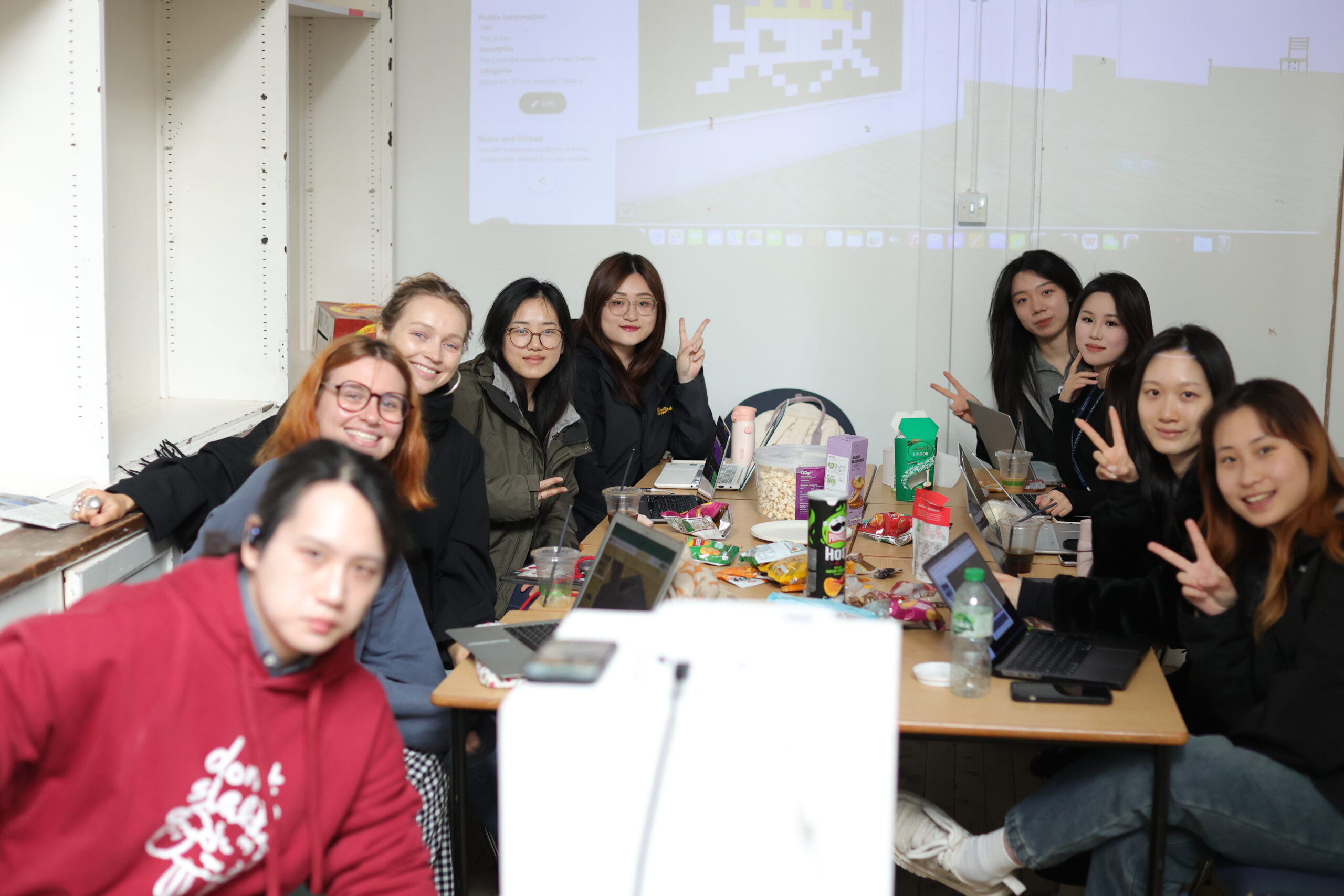
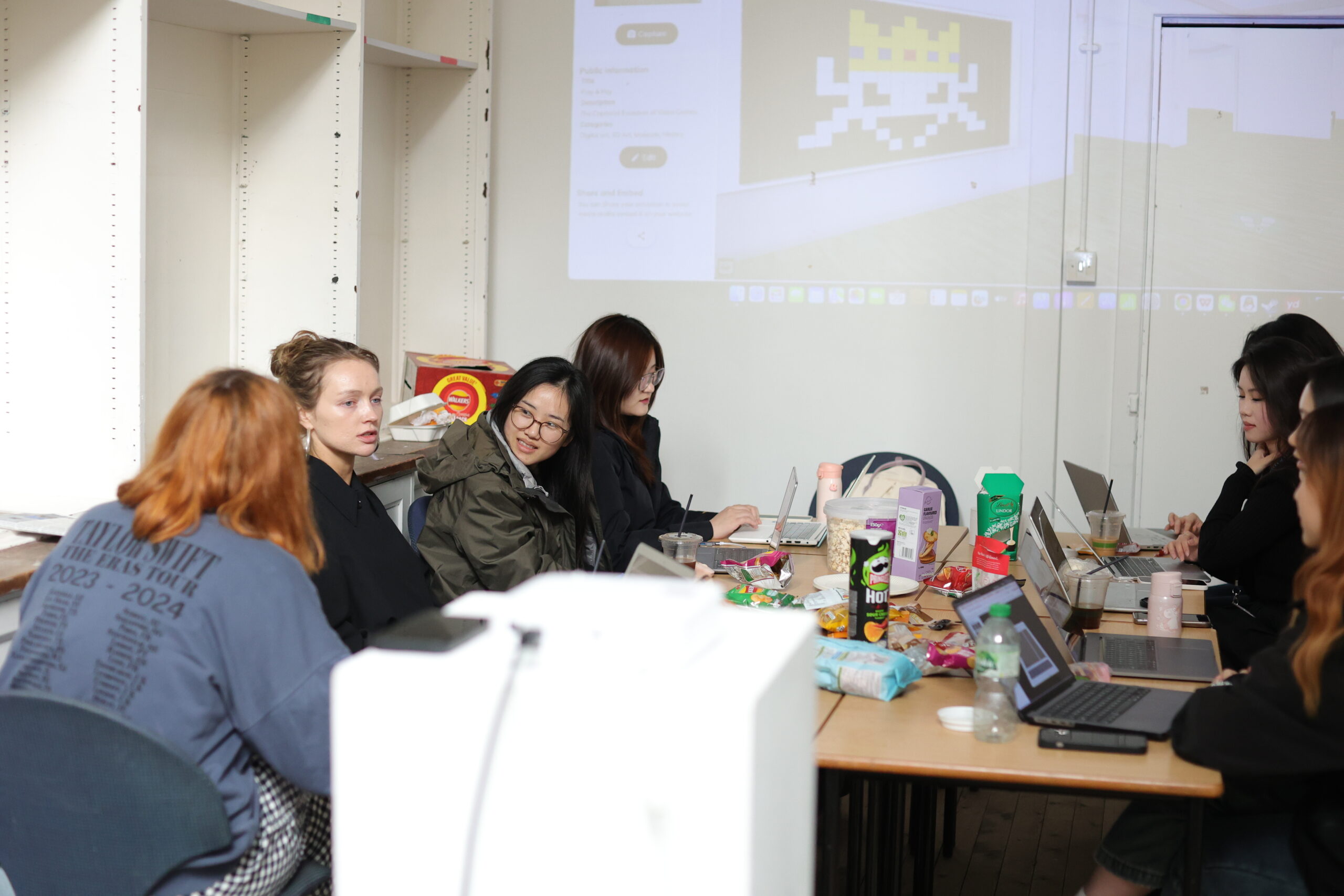
🌸 Summerhall Event 3 – Flower Arranging with Feeling
From screen to stem, the next session took us in the opposite direction—back to the material world.
We gathered for a flower arranging session. It wasn’t a workshop in the formal sense. No one was “teaching” us. Instead, it was something more beautiful: a space to create side by side. Each of us brought different flowers, and as we sat together on the wooden floor, trimming stems and passing colors to each other, something shifted.
This wasn’t just about arranging flowers. It was about arranging time, presence, and attention.
There were no rules, just silent understandings. A shared sense of “you add that, I’ll hold this.”
The bouquets we made were different, but they all reflected the gentleness of co-creation.
I realised—curatingdoesn’t always begin with a concept. Sometimes it starts with care.
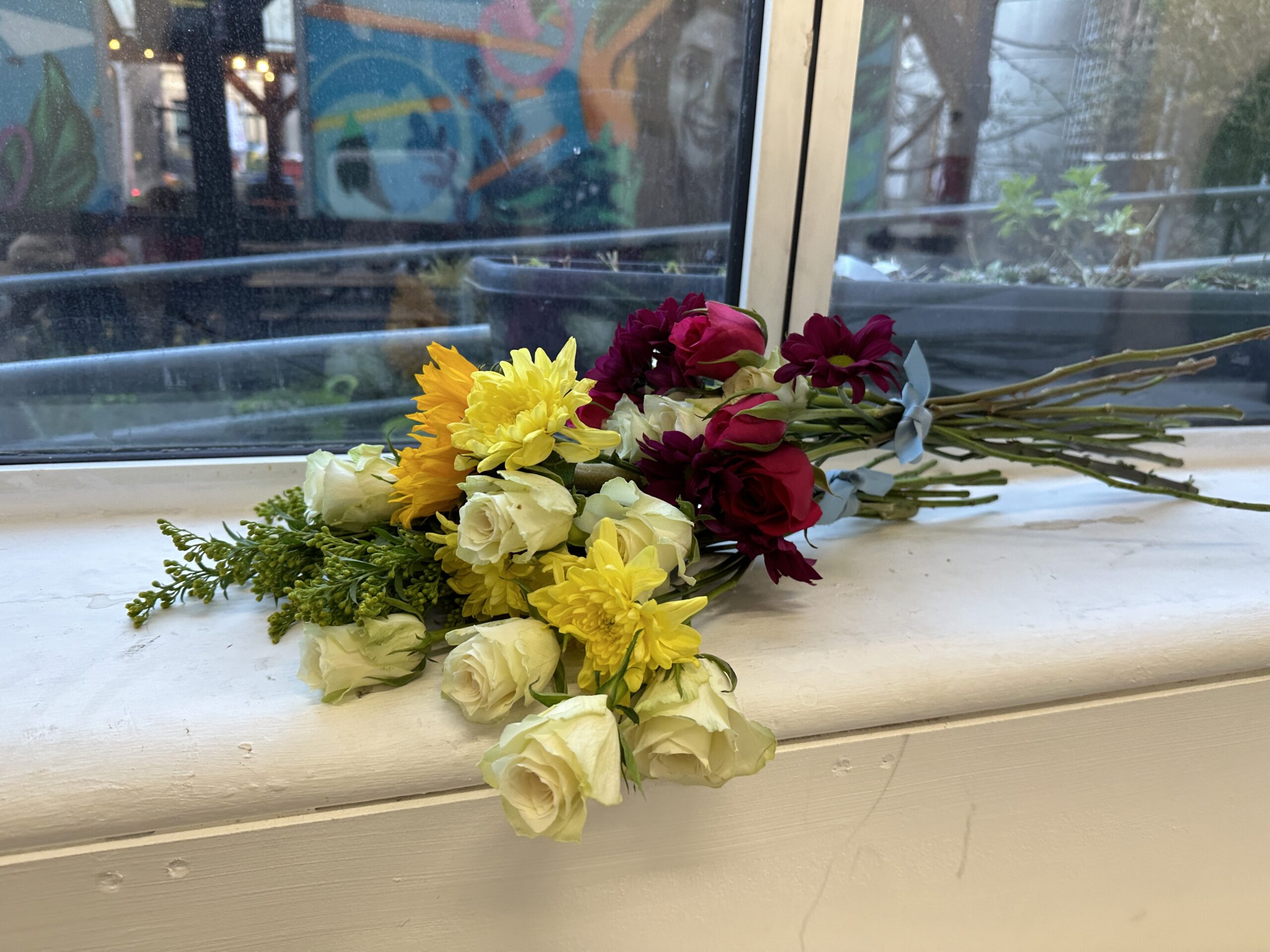
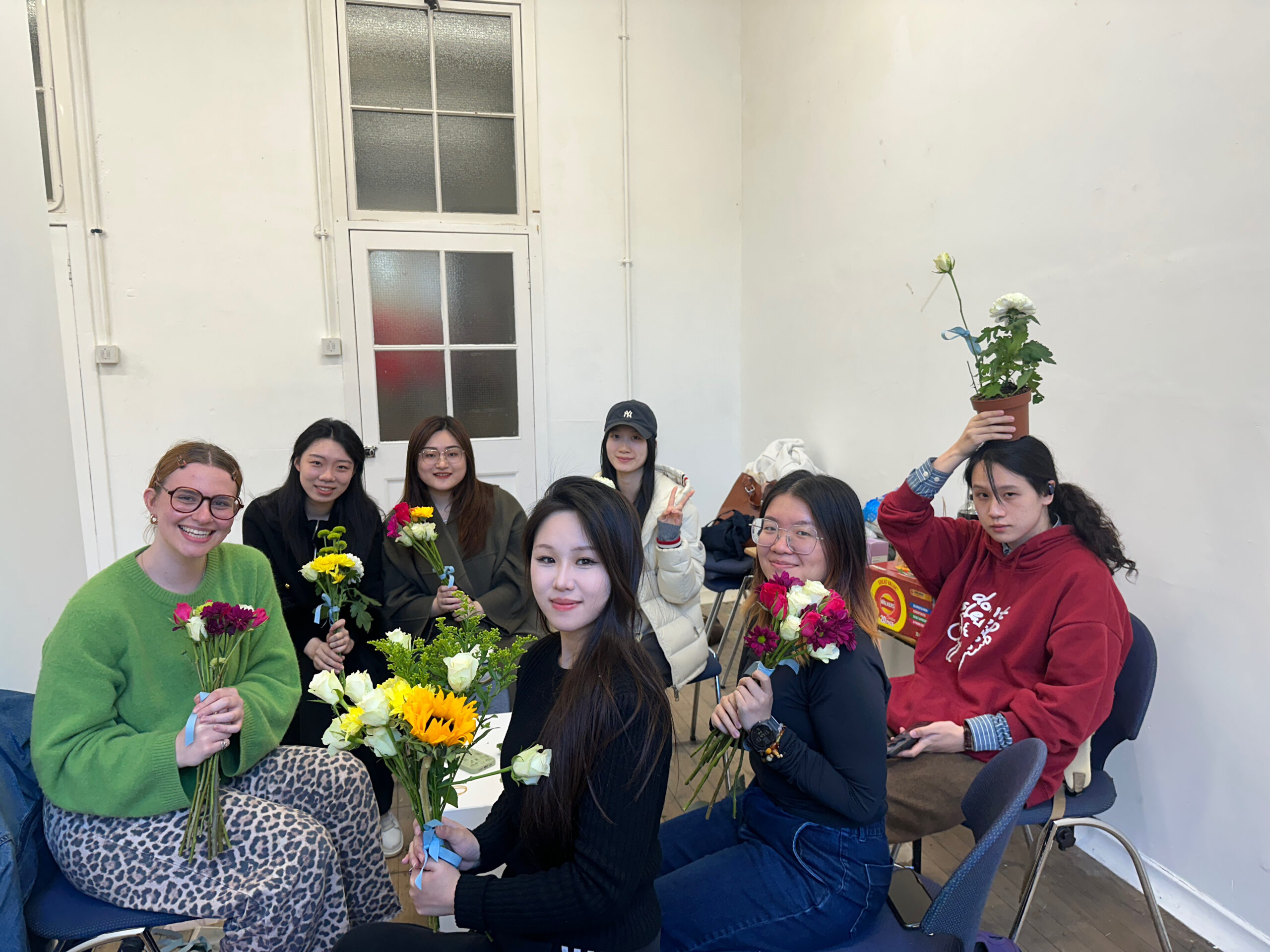
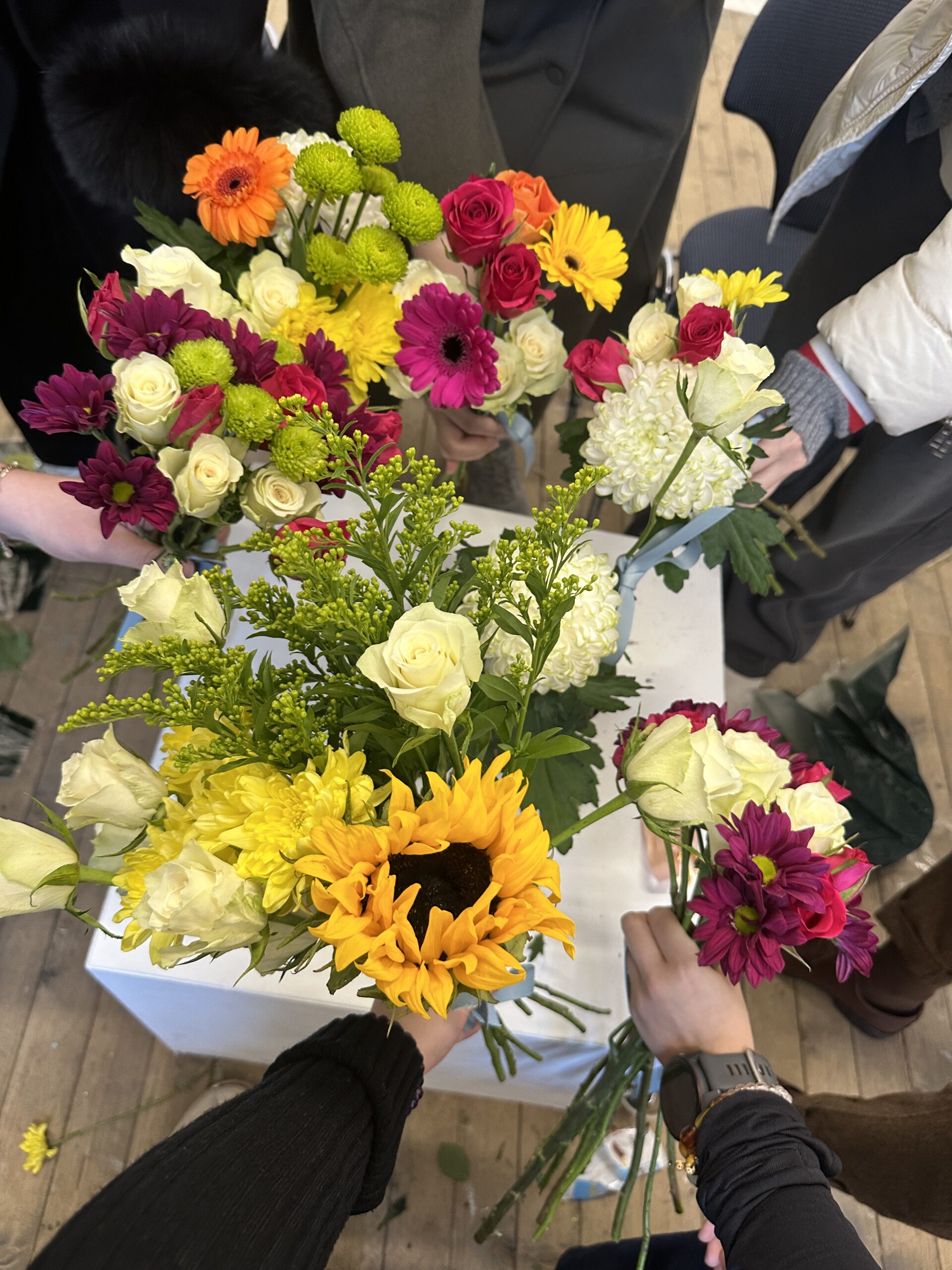
💬 Reflections on Practice
Looking back, these sessions taught me something vital. Curating isn’t just about selecting and displaying artworks. It’s also about learning how to be together—online and offline, formally and emotionally.
Whether building a virtual gallery or weaving petals into shape, we were always practicing:
- Shared decision-making
- Respecting differences in aesthetics and pace
- Making space for everyone to contribute
These moments, simple as they were, grounded my belief that “fluid curating” begins with real people, working together, experimenting, laughing, failing, adjusting, and making something new.
And honestly? That’s the kind of exhibition I want to make. One that’s not perfect, but deeply human.
